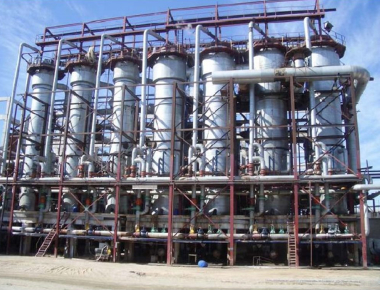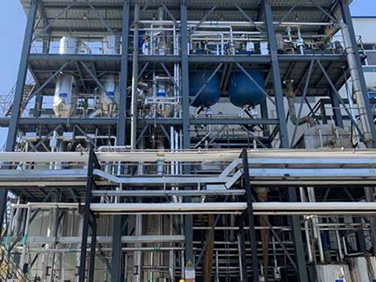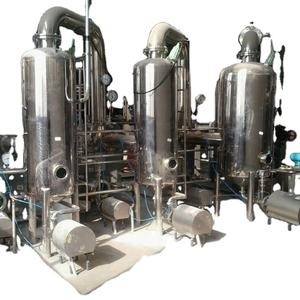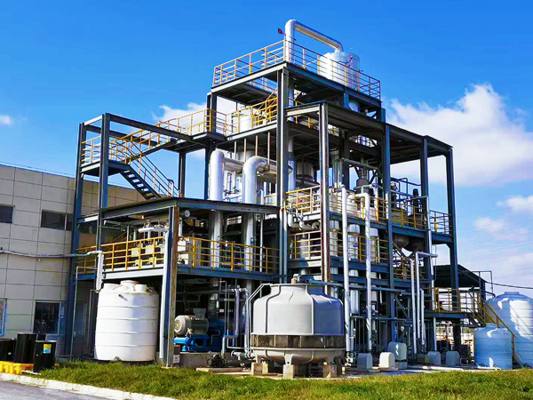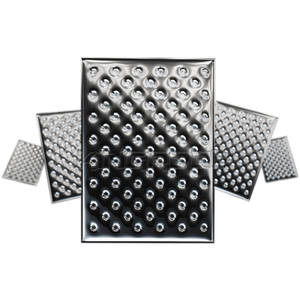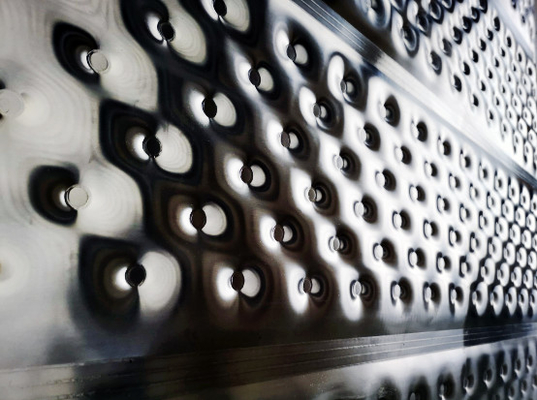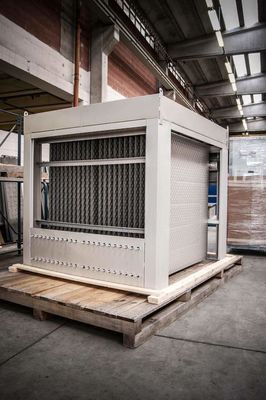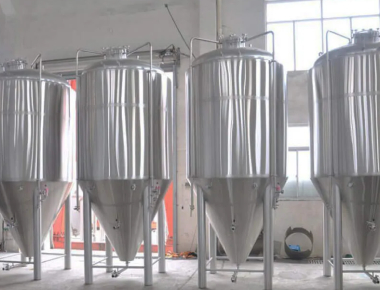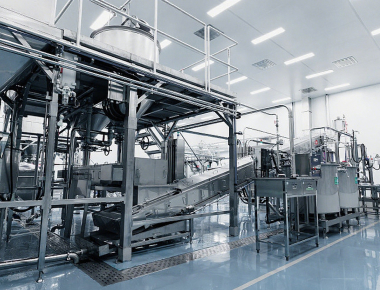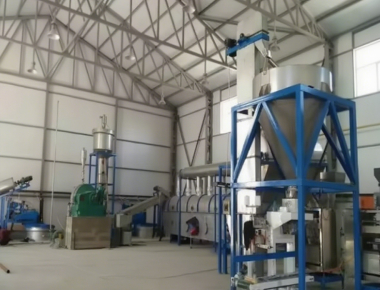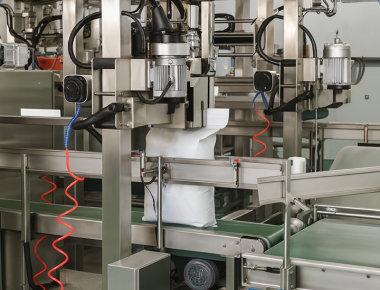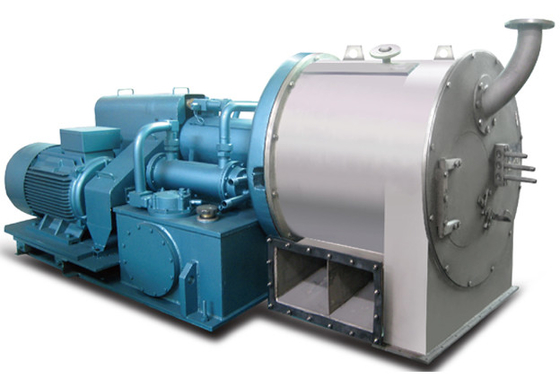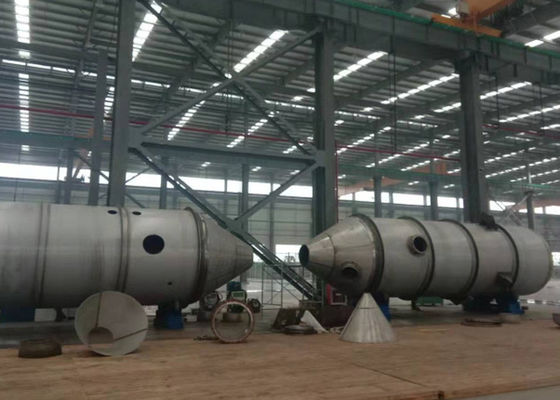Customized steam saving TVR Forced circulation evaporator for fruit juice/ dairy product/sauces
Thermal Vapor Recompression (TVR)
A method to reduce the energy consumption of a steam heated evaporator system.
Uses high pressure steam as the motive fluid to a steam ejector,to entrain recycled lower pressure steam and discharge the combined steam at a more useful intermediate pressure.
The vapor compression cycle rlies on the condensation temperature of the lower pressure steam increasing with the increase in pressure.
How Thermal Vapor Recompression Evaporators Work
To reduce energy consumption, water vapor from an evaporator is entrained and compressed with high pressure steam in a thermocompressor so it can be condensed in the evaporator heat exchanger. The resultant pressure is intermediate to that of the motive steam and the water vapor. A thermocompressor is similar to a steam-jet air ejector used to maintain vacuum in an evaporator.
Only a portion of the vapor from an evaporator can be compressed in a thermocompressor with the remainder condensed in the next-effect heat exchanger or a condenser. A thermocompressor is normally used on a single-effect evaporator or on the first effect of a double- or triple-effect evaporator to reduce energy consumption. Like mechanical recompression, thermal recompression is more applicable to low boiling-point rise liquids and low to moderate differential temperatures in the heat exchanger to minimize the compression ratio.
The double-effect evaporator with thermal recompression requires 33% less steam than the conventional double effect. In essence, the steam usage for the double effect with thermal recompression is comparable to that of a triple-effect evaporator.
APPLICATION
The Evaporator Falling Film TVR provides a fully automatic and continuous evaporation system. The Evaporator Falling Film TVR is suitable for the production of the complete range of products. The system is customer specific designed, and therefore available for a wide range of product compositions and capacities.
HIGHLIGHTS
Long production runs due to high hygienic standards
Proven technology
Fully cleanable (Cleaning in Place)
WORKING PRINCIPLE
The Evaporator Falling Film TVR is fed from the wet process area. From the balance tank product is heated to at least boiling temperature of the first calandria, depending on the final product demands. This can be done by plate heat exchangers, tubular heat exchanger and/or direct heaters by use of condensate, excess vapours, steam and/or hot water. After the heating process the product is fed to the first calandria where the product starts to evaporate. The evaporator works according the falling film principle, which means that product and vapour are flowing downwards through the tubes. At the bottom, concentrate falls down and vapour is sucked into the separator, whereby the smaller concentrate droplets are separated from the vapour. Concentrated product is pumped to the next pass, whereby the product is further concetrated. After the final calandria pass product is pumped, depending on the product and required concetrate properties, to a next calandria, concentrate tanks of the dryer or via a flash cooler to crystallisation tanks. As the amount of water evaporation is limited and the required temperature difference is relatively high, steam is used as driving force. This is referred to as thermal vapour recompression (TVR). Depending on capacity and specific product needs the number of stages and thermo-compressors are defined. A density controller in the concentrate flow is used to set the steam flow to the thermo-compressor.
| Performance Comparison for Different Evaporator |
| Item |
Single effect evaporator |
multi-effect evaporator |
TVR evaporator |
MVR evaporator |
| Energy consumption |
energy consumption is much higher than others, 1ton water will consume 1Ton steam in theory |
comparatively energy conservation |
Base on traditional multi-effect evaporator, one more effect added, but higher pressure steam driven needed |
The most energy saving technology for evaporator, but 10-40kwh power consumption |
| Floor space |
Small |
large |
large |
small |
| Energy sources |
steam & power, need steam pipe network and boiler |
steam & power, need steam pipe network and boiler |
steam & power, need steam pipe network and boiler, need high pressure steam. |
electricity, don't need pipe network, all the close-loop circulation system |
| Automaticity |
Semi automatic |
Full automatic operation, continuous evaporation |
Full automatic operation, continuous evaporation |
Full automatic operation, continuous evaporation |
MVR and triple effect evaporation equipment running cost compare:
| 10T/h Evaporator running cost compare |
|
| Name |
MVR evaporator |
Triple-effect evaporator |
|
| Steam consumption cost |
0.6(material pre-heating steam consumption)t/h×180RMB/t=108RMB/h |
[4.0+0.6(material pre-heating steam consumption)]t/h×180RMB/t=828RMB/h |
|
| Electric charge |
500kw/h×0.80RMB/kw=400RMB/h |
160kw/h×0.80RMB/kw=128RMB/h |
|
| Recovery of condensed water |
10.6t/h×3RMB/t=32RMB/h |
14.6t/h×3RMB/t=44RMB/h |
|
| Operation cost per hour |
108+400-32=476RMB/h |
828+128-44=912RMB/h |
|
| Annual operating cost |
476RMB/h×24h×300day=3427200RMB |
912RMB/h×24h×300day=6566400RMB |
|
| Annual operating cost difference:6566400-3427200=3139200RMB |
|
FAQ
What is the difference between an MVR and TVR evaporator?
MVR is a Mechanical Vapor Recompression system, energy source is Power/Electricity, very low energy consumption
TVR is a Thermal Vapor Recompression system- energy source is steam, energy consumption dependent on number of stages (calandrias) of evaporation.
Why use a Falling Film evaporator?
The falling film evaporator is a gentle way to remove water in a very energy efficient way. Small footprint for high evaporation.
How high can you go in total solids?
This is very dependent on type of product, all products must be individually considered, mostly the stickiness and viscosity will determine the total solids.
Does viscosity have an impact on the possibility to use an evaporator?
Yes, the viscosity is a very critical factor for a good evaporation, the product must be pumpable.
What kind of products can you run on a falling film evaporator?
Almost all pumpable liquids and soluble products can be run on a falling film evaporator.
Our production Equipment




 Your message must be between 20-3,000 characters!
Your message must be between 20-3,000 characters! Please check your E-mail!
Please check your E-mail!  Your message must be between 20-3,000 characters!
Your message must be between 20-3,000 characters! Please check your E-mail!
Please check your E-mail! 
